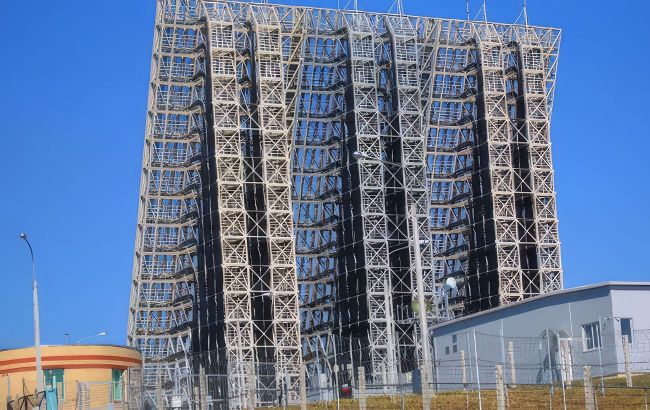Blow to strategic capabilities: Media explains significance of Voronezh-M hit
 Photo: Media explains the significance of the strike on Voronezh-M (Wikipedia)
Photo: Media explains the significance of the strike on Voronezh-M (Wikipedia)
If the drone strike by the Defense Intelligence of Ukraine is confirmed, it will disable half of Russia's over-the-horizon radar stations in the south-southeast direction, according to Defense Express.
According to Defense Express, prior to today's strike on the Voronezh-M radar station by the Defense Intelligence of Ukraine, two Voronezh-DM over-the-horizon radars near Armavir were also hit.
Specifically, targeting these radars is a significant blow to Russia's strategic capabilities, as they are responsible for detecting intercontinental and medium-range ballistic missiles, and are part of the missile attack warning system.
The primary task of Voronezh-M was to provide early warning of ballistic missile launches in the sector from the Persian Gulf to the Sea of Japan. This means it covers China, India, and Pakistan, as well as potential launch areas in the Indian Ocean.
"Thus, if the disabling of Voronezh-M is confirmed, it would mean targeting 50% of all over-the-horizon radars responsible for the conditional "south-southeast" direction," Defense Express notes.
At the same time, Russia still maintains surveillance of China with:
- Voronezh-DM near Barnaul;
- Voronezh-M near Usolye-Sibirskoye in the Irkutsk region.
Taking into account the distance to the affected radar stations, there are several more Voronezh-type stations within reachable range from Ukraine. These include:
- Voronezh-M near St. Petersburg (900 km). Its surveillance area covers the North Sea and the North Atlantic.
- Voronezh-DM in the Kaliningrad region at Dunayevka airfield (450 km). Its surveillance area is the sector from the North Atlantic to Italy;
- Volga in Belarus near the town of Hantsavichy. Its surveillance area extends 110 km towards Europe.
The hit of Voronezh-M
On May 26, according to an RBC-Ukraine's source, a Defense Intelligence of Ukraine drone attacked the Voronezh-M over-the-horizon radar in the city of Orsk, Orenburg region of the Russian Federation.
"The Ukrainian drone covered a distance of over 1,800 kilometers to the enemy target, setting a new range record for kamikaze drones," the source reported.
Later, the media showed photos of the aftermath from the satellite.

